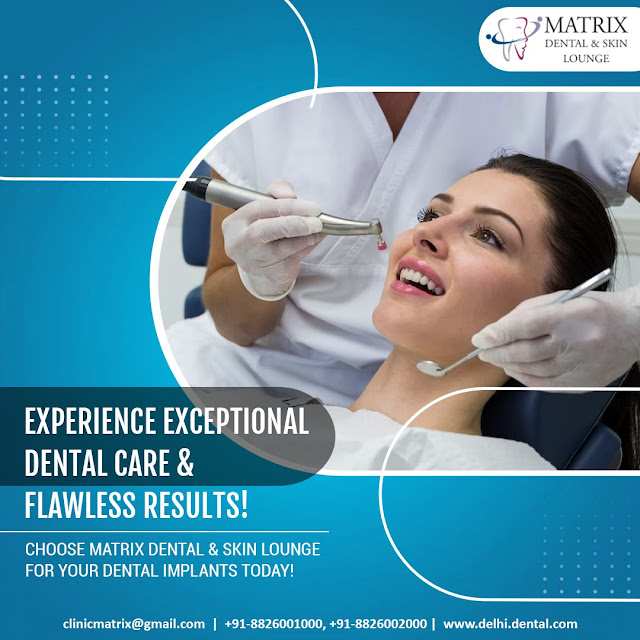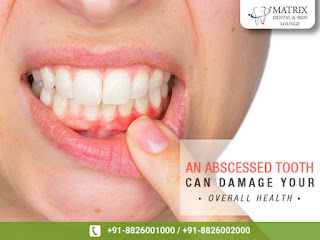Biomechanics In Orthodontics: Current Advances And Future Possibilities
Orthodontics is a specialized field of dentistry that involves the use of appliances to correct the alignment and positioning of teeth and jaws. Biomechanics, which is the study of the mechanical principles that govern living organisms, plays a crucial role in orthodontic treatment planning and execution. In recent years, there have been significant advances in the field of biomechanics that have led to improved treatment outcomes for patients. When it comes to orthodontics in Delhi, Matrix Dental & Skin Lounge is the place to be. Our team of skilled and experienced dentists, including the best dentist in Delhi and the best dentist in South Delhi, utilize the latest biomechanics techniques to correct the alignment and positioning of teeth and jaws.
As
the best dental clinic in Delhi, we
offer advanced orthodontic treatments such as self-ligating brackets, temporary
anchorage devices, and 3D printing technology to ensure faster treatment times
and reduced discomfort for our patients. In this blog, we will delve deeper
into the current advances in biomechanics in orthodontics and the exciting
future possibilities for the field.
Current Advances In Biomechanics In Orthodontics:
● Self-ligating brackets: Self-ligating brackets are
orthodontic brackets that use a slide mechanism to hold the archwire in place.
This technology reduces friction and allows for more efficient tooth movement,
resulting in faster treatment times and reduced discomfort for patients.
● Temporary anchorage devices: Temporary anchorage devices (TADs)
are small titanium screws or mini-implants that are placed into the jawbone to
provide additional anchorage for tooth movement. TADs can be used to move teeth
in directions that were previously difficult or impossible to achieve, such as
destabilizing molars or uprighting tilted teeth.
● 3D printing: 3D printing technology has revolutionized the way
orthodontic appliances are designed and manufactured. With the help of 3D
printing, it is now possible to create highly customized orthodontic appliances
that fit the patient's teeth and jaws perfectly.
● Digital orthodontics: Digital orthodontics involves the use
of computer-aided design (CAD) software and 3D scanning technology to create a
virtual model of the patient's teeth and jaws. This technology enables
orthodontists to visualize treatment outcomes and plan treatment more
accurately.
● Smart wires: Smart wires are orthodontic wires that have shape
memory and can apply a continuous, light force to teeth over a long period.
This technology reduces the need for frequent wire adjustments, resulting in
faster treatment times and reduced discomfort for patients.
Future Possibilities In Biomechanics In Orthodontics:
● Biodegradable materials: Biodegradable materials such as
polylactic acid (PLA) and polyglycolic acid (PGA) could be used to create
orthodontic appliances that degrade over time, reducing the need for appliance
removal and reducing waste.
● Biomechanical modelling: Biomechanical modelling involves
using computer simulations to predict the behaviour of teeth and jaws during
orthodontic treatment. This technology could be used to optimize treatment
planning and predict treatment outcomes.
● Nanotechnology: Nanotechnology involves the use of nanoscale materials
to create orthodontic appliances that are stronger, more durable, and more
efficient at moving teeth.
● Gene therapy: Gene therapy involves the use of gene editing
technology to correct genetic defects that cause malocclusions. This technology
could potentially eliminate the need for orthodontic treatment altogether in
some cases.
In
conclusion, biomechanics plays a crucial role in orthodontic treatment planning
and execution. Current advances in biomechanics have led to improved treatment
outcomes for patients, and future possibilities hold even more promise for the
field. Orthodontists who stay up-to-date with the latest advancements in
biomechanics will be better equipped to provide their patients with the most
efficient and effective orthodontic treatment possible.



Comments
Post a Comment